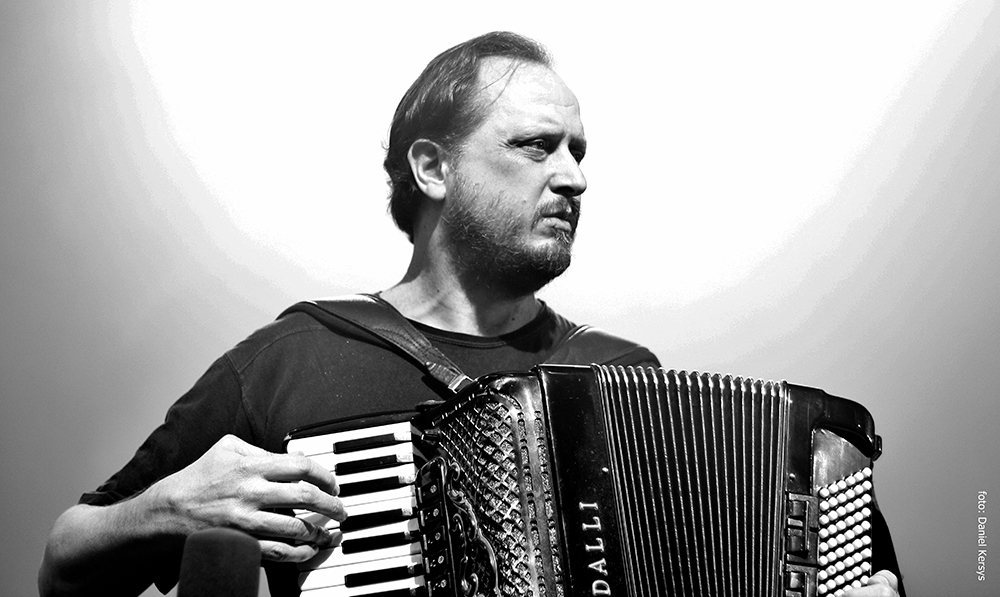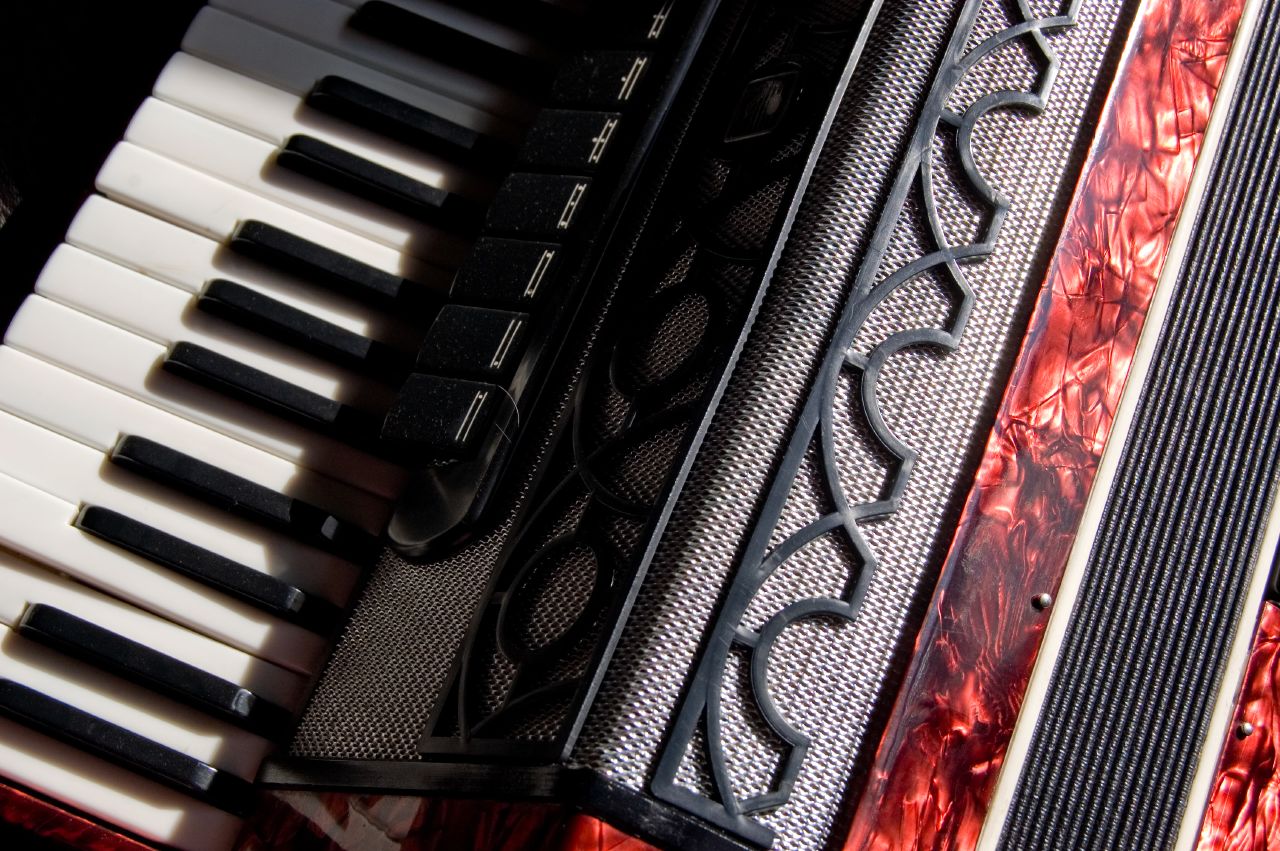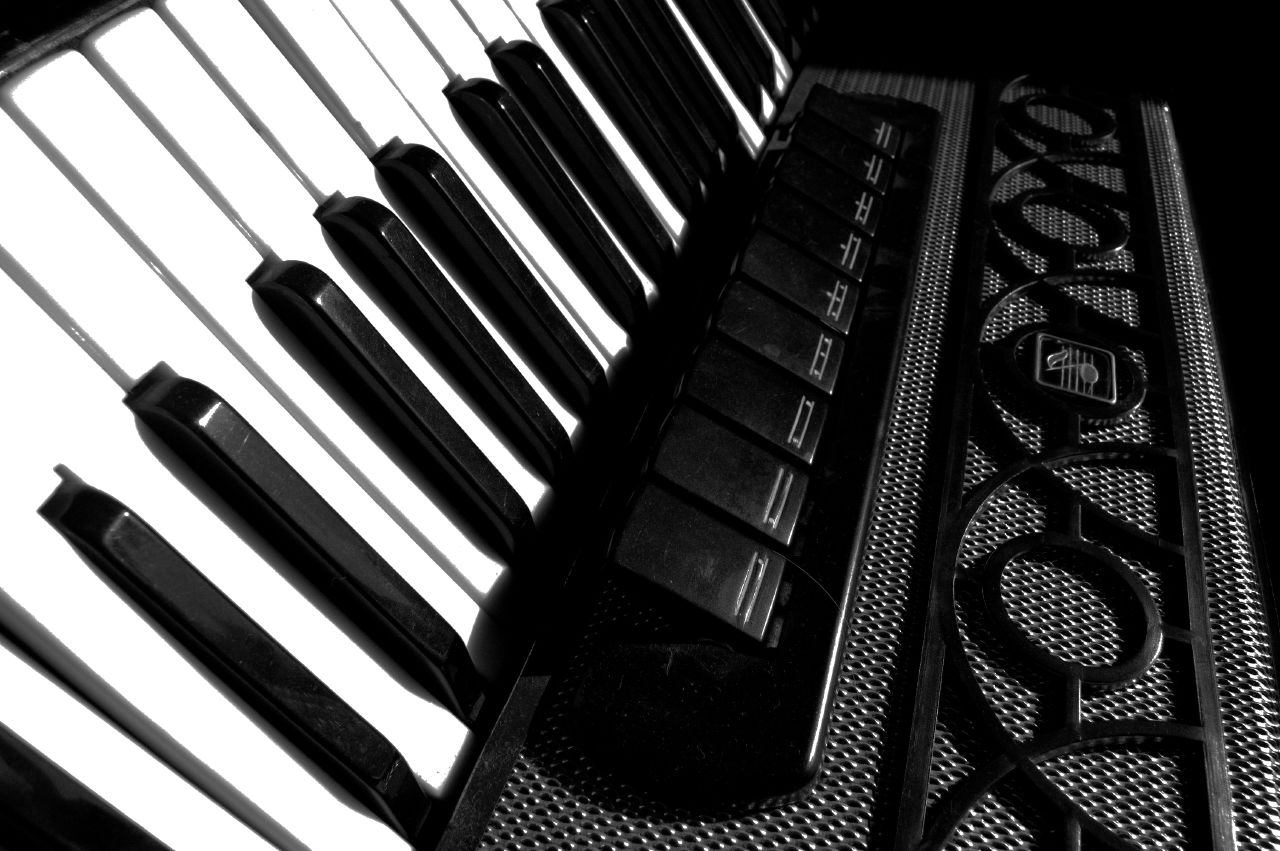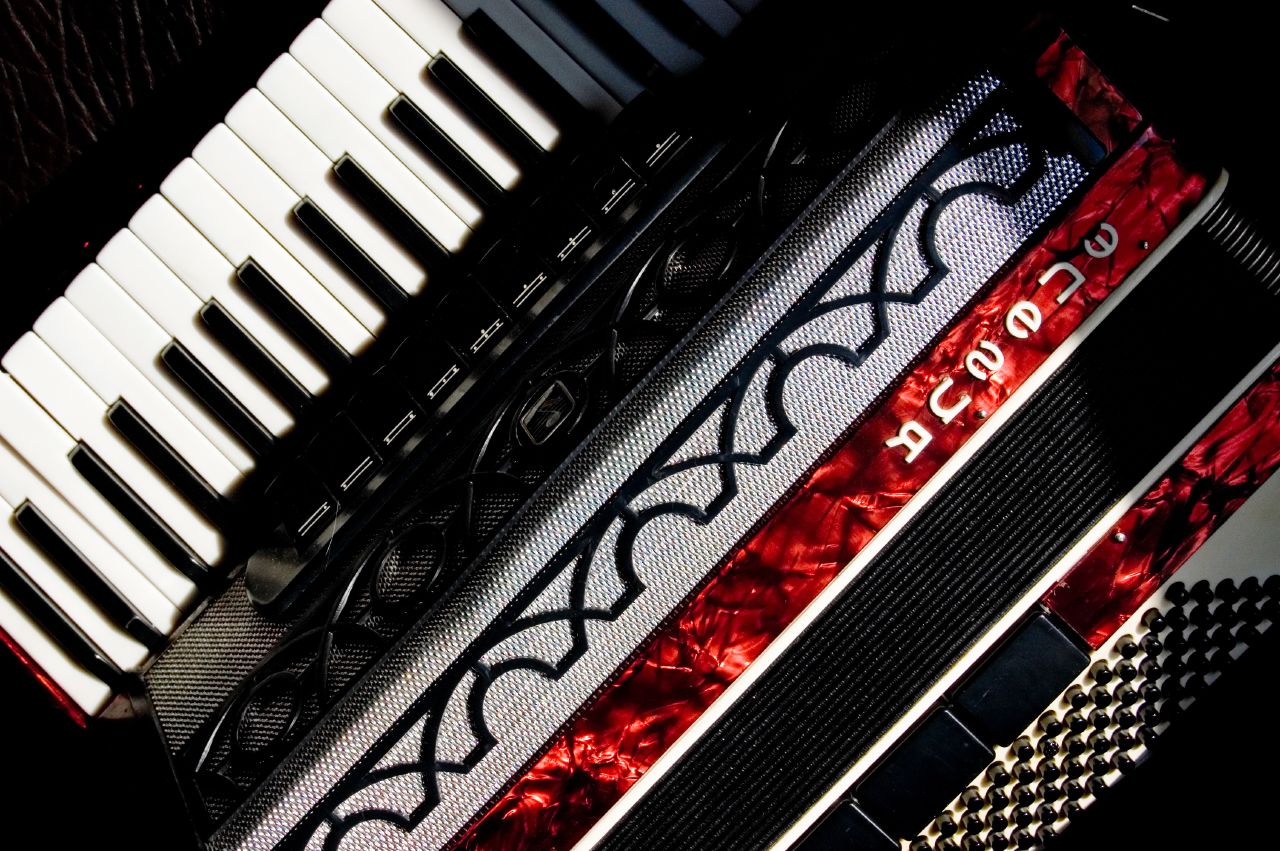Gabriel Levy (Accordion)
Português | 日本語 | Español

In this concert of the Music in the Castle (Música no Castelo) project, organized by the Japan Foundation, we will have the musician, producer and composer Gabriel Levy interpreting his own repertoire and Japanese folk songs on the accordion.
Accordion, sanfona, gaita, hand harmonica?
With several names for the same instrument that conquered the Brazilian public and the world, the sanfona became Brazilian in the hands of Luiz Gonzaga, Sivuca, Dominguinhos, among other great interpreters, not to mention the various names of the new generation of accordion or sanfona players. But who would say that this instrument so Brazilian has its roots far from our continent? It all started in China, but the sanfona first conquered the south of Brazil.
The accordion was brought to Brazil by European settlers and immigrants, mostly Italians and Germans, who settled in southern Brazil (the states of Rio Grande do Sul, Santa Catarina, and Paraná). The first instrument they brought was called a “Concertina”.
The accordion was very popular in southern Brazil and, thanks to its multiple configurations, it was easily adapted, despite being a European instrument. In the mid-1950s, some homes even had up to two instruments.
A curious fact: the accordion is the official symbol of the state of Rio Grande do Sul (RS), whose bill in that regard passed by a unanimous vote in the city council.

At the height of its success, there were around 65 factories of this instrument in Brazil. Most are located in Rio Grande do Sul and only 7 of them outside the southern region. One of the most famous and genuinely Brazilian makers was Acordeões Todeschini, from Bento Gonçalves (RS), closed in 1973. The Todeschini accordion is still very much appreciated today and has survived even with few workshops specialized in its maintenance.
In the south of Brazil, the accordion is known as the gaita and plays a key role in regional music in the states of Paraná, Santa Catarina, and Rio Grande do Sul. The diatonic accordion, in turn, is called the gaita-ponto, gaita-botoneira, button gaita or simply a buttonboard (botoneira).
It has also become popular in the Northeast and Mid-West regions of Brazil. The first genres (fado, waltz, polka, bugiu, cajun) depicted the folklore of Portuguese, German, Italian, French, and Spanish immigrants.
In the Northeast, where the accordion has been known as a sanfona, more precisely since the beginning of the 20th century, following the construction of the Brazilian railway network by the English, a new rhythm, the forró, was created, in which one of the main musical instruments is the accordion. In the Northeast, Luiz Gonzaga Nascimento, known as the King of Baião, was a prominent accordion player, who composed the song “Asa Branca” (White Wing) (1947).
But let’s travel back in time a little and check the origin of this versatile instrument. In 2,700 BC, the musical instrument called the sheng was invented in China, which is still played today. It is a kind of portable organ, played by blowing air from the mouth. It has the shape of a phoenix, which the Chinese consider to be the queen among birds. The sheng is divided into 3 parts:
• Air chamber
• Windpipe
• Bamboo pipes

The air chamber looks like the body of a teapot. The windpipe has the shape of a teapot spout or the neck of a swan. The number of bamboo pipes would vary, though most commonly 17 are used. Interestingly, of these 17 bamboo pipes, 2 do not have a bottom opening for the air inlet, and are therefore mute and placed only for aesthetics purposes. In the upper part of the chamber, or air chamber, there are perforations in which the bamboo pipes are attached. In each pipe, mouthpieces or reeds are placed to produce the sound. This chamber (type of a gourd) is constantly supplied by the musician’s breath, who covers the small holes at the base of each pipe with the tips of his/her fingers. According to the music to be performed, the musician will loosen his/her fingers and can even form chords. In each bamboo pipe, there is a special frame to place the mouthpiece, attached by one end and loose at the other, vibrating freely with the compressed air.
The sheng is the precursor of the harmonium and the accordion, as it was the first to be conceived and built in the family of reed instruments. According to the region in which it was played, the sheng was given different names: schonofouye, hounofouye, tsheng, sheng, khen, tam kim, yu, tchao or ho. In Japan, it is called the shō.
The sheng or shō entered Japan around the 7th century with the Court’s orchestra, called Gagaku. Until today it is part of this important musical group, which introduced several musical instruments to Japan, in addition to the shō.

According to Jesuit priest Amiot, the sheng was taken from China to St. Petersburg, Russia, where Kratzenstein (Christien Theophile), PhD in philosophy, medicine and professor at the Faculty of Medicine at the University of Copenhagen, born in Wernigerode, Prussia, in 1723, examined the instrument and found that its sound agent was a metal blade, which vibrated by blowing it, producing low and high-pitched sounds.
He suggested that Kirschnik included in the pipes of the organs, of his manufacture, this free metal blade, made in 1780. From Russia, it went on to Europe, with Germany taking great interest, mainly in the organ instruments. This then led to instrument maker Christien Friederich Ludwig Buschmann coming up with the idea, in 1822, of combining several tuned blades, fixed on a board forming a scale, whose sounds were heard passing quickly by blowing it. He later transformed this small board into a musical instrument as a toy for children, played with both hands, which he called handaolin or hand harmonica. To achieve that, he increased the number of metal reeds and the size of the instrument, attaching a small bellows and a number of buttons.
According to history, this instrument was perfected by Koechel and, 7 years later, the Austrian inventor Cyrill Demian built in Vienna a rudimentary instrument with a free reed, keyboard and bellows and, because it had 4 buttons on the left hand part, which, when played with sunk fingers, permitted obtaining the chord, he called it an accordion, a name that was definitely linked to the instrument through countless improvements.

In France, the accordion was perfected in 1837 by C. Buffet. According to all the treatises on the subject, the accordion is nothing but the improvement of several instruments of the same genre, such as Eschenbach’s oeline, Christian Dietz’ aerophone, and Hackel’s physarmonic, taking its definitive form since that date, as well as its various registers for changing the intensity and timbre of the sound.
Later, with the chromatic scale, the accordion was able produce any melody or harmony, and countless manufacturers then perfected it, placing registers on it, both in the right and left hands, for a greater variety of sounds.
In Germany, the first accordion was built in 1822, in Berlin. The famous Hohner brand accordions come from this country. And the first Italian accordions were built in 1863, in Castelfidardo, in Ancona.
The accordion has reeds, fixed on small wooden supports, called castles. The accordion sound is created when the air in the bellows passes through small pipes in the castles, which direct it to the reeds. With air pressure, the reeds vibrate and generate the sound. The larger the reed size, the stronger the bass notes it produces. The stronger the air is forced into the reeds, the more intense is the sound. The movement of the bellows is controlled by the left arm.

Most accordions have four voices, which are different octaves for the same key or button. Therefore, in a four-voice accordion with the ‘master’ register pressed, when playing a C, two Cs are actually played on the octave pressed: a C one octave above and a C one octave below, and this is responsible for the unique sound of the accordion.
Registers are keys that modify the sound, alternating which octaves are played. They are located above the keys, in the case of the keyboard, or next to the bellows or, in the case of the basses, on the back of the accordion.
These are the most common registers:
• Master
• Bassoon
• Clarinet
• Piccolo
• Bandoneon
• Acordeon
• Saxophone
• Harmonium
• Organ
• Musette
• Violin
• Flute
• Oboe
Among many others, it can have even more than 30 keys (repeating some registers for better reach during the execution of the song).
Accordions also have registers on the bass side, responsible for alternating the octaves played on the bass buttons. The number of such registers will vary according to the make and model of each instrument.

Gabriel Levy
Musician Gabriel Levy, besides being an accordionist, works as an arranger and composer. He has an eclectic background in both classical and popular music. Of this new generation, he stands out in the instrument, and has been nominated for the Brazilian Music Award as the best instrumentalist. He received the Catavento award from Rádio Cultura, in instrumental music category.
He has dedicated to music for plays, dance and scenic performances, taught at music festivals, music education symposiums, and teacher training courses in the cities of Londrina, Curitiba, São Paulo, the states of Minas Gerais, Bahia, and in Germany (Berlin Landesmusikakademie), and was a professor at the Municipal School of Artistic Initiation of São Paulo and at ULM- Free University of Music of São Paulo.
He has also published Music Education books and is currently a consultant to Projeto Guri. He has recently been dedicating to instrumental music as a composer and accordionist, performing on several international tours, including Portugal, France, Spain, England, Switzerland, Germany, El Salvador, Venezuela, Bolivia, Japan, and China.
In addition, he has performed alongside artists and groups of the most different styles, such as: Carlos Careqa, Miriam Maria, Palavra Cantada, Rogerio Botter Maio, Chico Saraiva, Marcelo Preto, Toninho Carrasqueira, Fortuna, Ceumar, Antonio Nóbrega, the Ballet of the City of São Paulo, Zé Geraldo , Tião Carvalho and Cupuaçu group, Thelma Chan, Pena Branca and Xavantinho, João Ba, André Abujamra and the Karnak band, Vanessa da Mata, Claudio Nucci, Fafá de Belém, Ivaldo Bertazzo, Quinteto Violado, Braz da Viola, Roberto Corrêa, Jacques Morelenbaum, and storytellers, such as Regina Machado and Marcia Moirah, Japanese music groups Bonsai Romã, Gaijin no Me, Trio Kagurazaka, and Seiha, lute players Samir Joubran (Palestine) and Sami Bordokan (Lebanon /SP), Portuguese guitarist Antonio Chainho, Kurdish singer and instrumentalist Sivan Perwer, among others.

He has been invited to join orchestras that accompany international artists on tour across Brazil, such as The Three Tenors, and Ute Lemper.
He was one of the accordionists portrayed in the film O Milagre de Santa Luzia (“The Miracle of Santa Luzia”), a documentary about the accordion in Brazil.
He is now a member of the MUNDANA, coordinated by Carlinhos Antunes, with whom he has worked with Fanta Konate (Guinea), Bayfall (Senegal), Kancham (India), Oleg Fateev (Moldova), Wauja natives, Badi Assad, from the COMETA GAFI ORCHESTRA (gafiera), with whom he has performed with Paulo Moura, Zé Renato, Pedro Luis e a Parede – MUTRIB (music from the Balkans and Eastern Mediterranean), and with musicians such as Goran Alachki (Macedonia) Boyko Sabev (Bulgaria), Vesna Bankovic (Serbia) and the MAWACA group of ethnic music, which researches musical traditions of the world, and worked alongside Tamie Kitahara (Japan/Brazil), Equidad Bares and Marc Egea (Spain), Né Ladeiras (Portugal), Pekka Lehti (Finland), Uxia and Carlos Nuñes (Galicia), Carlos Malta, Marlui Miranda, Yoko Nishi (koto), as well as musical exchanges with several indigenous peoples in Brazil.
Currently, he has been performing with his own trio or quartet, playing traditional repertoire or compositions inspired by songs from the around world. In 2015, he was awarded the Proac Notice, an incentive program, for his first original instrumental CD “Terra e Lua” (Earth and Moon).
Songs
– Bonsai Romã
Bonsai Romã is an original composition by Gabriel Levy, in which he seeks to approach one of the Japanese Pentatonic scales in the Phrygian mode, a scale widely used in Andalusian music and Spanish folklore. The idea of a pomegranate tree, symbol of the Arab presence in the Iberian peninsula, transforming into a bonsai tree joins both worlds: in the first part highlighting the Japanese flavor and in the second, the Hispanic color.
See the sheet music for Bonsai Romã
– Itsuki Tutu Terezinha
On his recent tour of Japan, Gabriel discovered that the children there also believe that if they dig deeply they will cross through the planet and reach Brazil, the same way that Brazilian children believe they would reach Japan. For that reason, he sought to bring the songs connected to the universe of childhood of both countries closer.
The main theme of this arrangement is the song “Itsuki no Komoriuta”, a lullaby from the village of Itsuki in Kyushu, originally a free theme with no defined rhythm. At the beginning of the 20th century, this melody received a metric with Western influence and today is a very often played theme. Gabriel added two Brazilian melodies to it: the first, Tutu Marambá, an old Brazilian lullaby, which starts with the same interval as the Japanese children’s song “Terezinha de Jesus”, with the same ternary rhythm.
Note that at the beginning of the song Gabriel uses the effect of the “shō” instrument, with high and dissonant chords.
Original song: (Itsuki no Komoriuta)
Itsuki lullabyI’ll only be here ‘til Bon (All Souls’ Day); if Bon comes early, I’ll go home early.
I’m just a beggar /These are goodly folk, with nice obi waist-sashes and nice kimono.
If I should die, bury me by the roadside; offerings or water will come from the heavens.
If I should die, who would cry for me? Only the locusts in those pine mountains.
– Sakura
Traditional song of the Edo Period, the cherry tree, Sakura, is a major symbol of Japan. Its power to delicately color the start of spring with its beautiful pink tones makes it an important symbol of renewal and the ability of the Japanese culture to rise in the face of adversity. It is depicted in kimonos, products, anime games, etc. Gabriel inserts the Japanese theme in Maxixe, a rhythm that precedes the choro, adding the expansive joy of this Brazilian dance to the contemplation of Japanese folk song.
> See the sheet music for Sakura
Original song: (Sakura)
Cherry treeCherry blossoms, cherry blossoms,
In fields, mountains and villages
As far as the eye can see.
Is it mist, or clouds?
Fragrant in the rising sun.
Cherry blossoms, cherry blossoms,
Flowers in full bloom.Cherry blossoms, cherry blossoms,
Across the spring sky,
As far as the eye can see.
Is it mist, or clouds?
Fragrant in the air.
Come now, come now,
Let’s go and see them!

Watch Gabriel Levy’s performance in the Music in the Castle project



